Tuesday, March 20, 2012
CHARACTER ACTIONS
HI folks,
I'm writing a new writer's how-to book, and I thought I'd share a sample chapter with you to get your feedback and also to helpfully give you some tools in your fiction writing. Still looking for a publisher, but may end up publishing it myself. Not sure at this point. Anyway, hope you enjoy the excerpt and get a bit of usefulness out of it:
A FICTION WRITER’S WORKSHOP AT THE BIJOU
By
Les Edgerton
I think you’ll find this chapter alone worth the price of admission to our little “theater” between the covers. The writer who can master the art and craft of defining their characters by their actions is going to be the author whose work gets read. By lots and lots of folks… Enough, hopefully, that you’ll never again have to say to someone about the novel you’ve written that it’s “only available in my room.”
*
A common fault of fiction writers in defining their characters and their character arcs is by neglecting to use one of the most powerful methods available. The technique? Namely, by showing the reader the nature of their character by the physical actions the writer chooses to provide their characters with. Precisely what countless writing gurus have been talking about for eons when they urge their students to: “Show, don’t tell.”
Movie people do this better than almost anyone. We can learn a lot from those Hollywood folks!
Most of us as fiction writers flesh out our characters with the use of description, via dialogue, by the interior thoughts of characters and by similar methods. All of these are good techniques and work well in the short story and novel. However, if the author ignores the use of using physical actions to help create their characters and to also show how they’ve evolved due to the events that happen along the way in the story (that character arc us writing teachers are always talking about), they’re missing what can be the most powerful tool of all. This is an area we can really make our novels come alive and impact the reader on a much deeper level.
The use of description is perhaps the weakest of the novelist’s tools in terms of character description. What of the following makes more of an impact in the reader’s mind? To read: “Elizabeth was an arthritic old woman.” Or, to read: Elizabeth labored up the stairs, a painful step at a time. She paused at each step, grasped the handrail with both hands and forced her ancient legs up yet another step. The second example wins, hands-down. Why? Because we “see” an action the character takes and because we see it happening it has an emotional impact on us. In the first example, we’re “told” what the character is (arthritic). Doesn’t make much of an impression at all. Not even close to the impression we get when we see her inching painfully up the stairs.
This is important enough that I’ll say it again: Characters are defined best and on a deeper level by their actions. As are their character arcs. You know, that deal where the character emerges at the end of the story a different person than when the story began as a result of all they’d gone through during the course of the tale. Why? Because they experience what the character does and what the character experiences at the same time the character does. They’re not being “told” this character has undergone a sea change—they “see” it with their own eyes, and are therefore convinced to a degree not remotely possible with the author “telling” them there’s been a change via their thoughts or any of the other aforementioned techniques.
A movie that illustrates brilliantly how all this can be accomplished through the character’s actions is screenwriter Callie Khouri’s Thelma & Louise. We’ll be looking closely at this film in this chapter and others, as it’s one of those rare movies that provide many, many teaching moments that can be valuable to fiction writers.
The basic plot of Thelma & Louise, is that two friends plan to go on a weekend getaway fishing in the mountains. On the way there, they stop at a roadhouse for a quick drink or two and Thelma gets sexually attacked by Harlan in the parking lot. Louise saves her friend by putting a gun to Harlan’s head just as he’s trying to penetrate Thelma. Situation defused, Harlan just has to say one last insult and Louise shoots and kills him. The women flee the scene and the rest of the movie is basically a chase scene, ending with the women opting for suicide rather than to go prison.
The plot is fairly simple on the surface, but the characterizations Khouri has created of these people make this an extremely complex film. What is magnificent about their characterizations is that they are each revealed chiefly through their actions. Virtually every single line in the script and every moment on the screen can be studied to your gain. I’ve watched this movie more than a hundred times and each time learned something new, both from the script Khouri has created and from the brilliant work these talented actors and the director Ridley Scott bring to the project.
First, let’s look at the physical actions Khouri has given to character Thelma (as played by Geena Davis) which define her character and brilliantly carry the viewer through as she transforms into a “new” person at the end. Louise is also given actions to define her character and arc, but we’ll mostly be looking at Thelma’s. Once you’ve read this, then the script, and then watched the movie, take an extra step and go back and see how Louise’s actions inform her character as well.
The setup
We’ll begin with the “setup.” The structure of movies used to be that roughly the first ten minutes served as the “setup.” This is where the principle characters are introduced and we learn who they are and what their situation is and the inciting incident and story problem are dramatized. This is one of those things that have changed in the last few years. Setup time has been drastically reduced in more and more movies and is fast becoming a thing of the past.
In the beginning of the setup of Thelma & Louise, there are a series of intercuts between the dual protagonists. We see Louise (played by Susan Sarandon) at her work—slinging hash in a Denny’s-type restaurant. We see Thelma at home with her emotionally-abusive and immature husband Darryl (played by Stephen Tobolowsky), a guy who’s transcended the role of male chauvinist pig to that of male chauvinist hog.
What actions does she perform that define her character? The very first one is her dialogue with Louise. The movie opens with Louise at a pay phone at the restaurant calling Thelma, asking her if she’s ready to leave on her trip. Here’s the way it looks in the script.
Louise
(at pay phone)
I hope you’re packed, little sister, ‘cause we are outta
here tonight.
(By the way, when Louise calls her “little sister,” this also defines their relationship. As you’ll see, Louise begins in an almost “mother” role and Thelma as the child and in the very first line of dialogue in the movie, Khouri has already begun to define that relationship.)
Thelma responds with her first dialogue, which likewise immediately begins to define her character.
INT. THELMA’S KITCHEN—MORNING
Thelma
(whispering guiltily)
Well, wait now. I still have to ask Darryl if I can go.
Right off the bat, we can tell from what she says to Louise that she’s one of those “dutiful little wives.” We don’t know at this point if Darryl is her boyfriend or husband, but we do know from what she says that she feels she has to get permission from him, and that bespeaks volumes about their relationship, whichever it is.
But, as Louise answers her offscreen on the phone, and we hear Louise’s voice, Khouri gives Thelma a great piece of “actor’s business” (action) that really shows her character and where she’s at in her relationship with Darryl. Here’s Khouri’s action for her character (italics mine):
Thelma has the phone tucked under her chin as she cuts out coupons from the newspaper and pins them on a bulletin board already covered with them. We see various recipes torn out from women’s magazines along the lines of “101 Ways to Cook Pork.”
If that action doesn’t show us who Thelma is and what kind of person she is, nothing ever will! In less than fifteen seconds on the screen, Khouri has given us both a bit of dialogue and a specific action that deliver us a three-dimensional character and speaks volumes about who she is.
Then, after she hangs up from her conversation with Louise, Thelma goes to the bottom of the stairs, leans on the banister, and yells up, “Darryl! Honey, you’d better hurry up!”
Again, with dialogue, she’s shown she’s the dutiful little wife, pandering to her husband almost as if he was a little child and she the mom urging him to get up. You can just tell that this is a daily routine and that she has to be the “mom” to her husband… and we get all this before we even see Darryl. By her dialogue and by her actions. All in about thirty seconds.
Darryl makes his appearance and Khouri defines his character also by his actions. First, by the way he’s dressed and the way he acts. Khouri gives him this appearance: Darryl comes trotting down the stairs. Polyester was made for this man and he’s dripping in “men’s” jewelry.
She further defines his character by his response to Thelma’s urging him to “hurry up.” He says, “Dammit, Thelma, don’t holler like that! Haven’t I told you I can’t stand it when you holler in the morning.”
Less than a minute has gone by in the story and we’ve already got a crystal-clear view of these two people and of their relationship. Thelma then replies (sweetly and coyly), I’m sorry, doll, I just didn’t want you to be late.”
Next, Khouri provides the character of Darryl with a very revealing bit of action, when she writes: Darryl is checking himself out in the hall mirror and it’s obvious he likes what he sees. He exudes overconfidence for reasons that never become apparent…He is making imperceptible adjustments to his overmoussed hair. (Then, another action by Thelma that further defines her character. Italics mine.) Thelma watches approvingly.
In the briefest span of time, we see these two people for exactly who and what they are. All delivered via their actions (mostly) and a bit of dialogue.
Louise's character is defined even before Thelma's, in the very first scene. She's waiting tables and one of her "tops" has a group of teenaged girls, whom she admonishes for smoking, citing the well-worn chestnut that "smoking will stunt your growth." This action informs us of her character and role in the movie—that of the mother. Immediately after she's chastised the girls, she goes into the kitchen for a break and has a cigarette herself. Not only does it define her mothering character, it shows us that she's an unreliable character. She preaches one thing but does another. Pretty much what a normal parent might do!
Also, each woman has an action that defines both their individual characters and their relationship to each other. Louise is smoking—an “adult” action. In the intercuts, Thelma is chewing on a candy bar—a “child’s” action. As the story unfolds, Thelma will abandon the candy bar and take up smoking as she moves closer to adult status.
There are countless other examples of how Callie Khouri defines each and every character by their action—virtually everything the people in her story does defines their characters. There isn’t any “actor’s business for the sake of actor’s business” anywhere in the script. These aren’t things they just “do” while delivering their lines. They do serious plot and story work.
Let’s move on.
Guns to create character arch
Tools and how characters use them are very effective ways to create a character's growth. In Thelma and Louise, one of the most important actions Khouri uses to deliver Thelma’s character arc in the story is when the two women meet at Thelma’s house to begin their trip. Thelma has elected to bring along a revolver and it’s the way she physically handles it that is a particularly brilliant piece of writing by Khouri. Thelma picks up the gun gingerly by the thumb and two fingers, obviously terrified of the weapon when she takes it out of the drawer to pack. That action is reinforced when, minutes later, she reveals to Louise she's brought the weapon and she again holds it as if she's afraid it will go off and shoot her when she follows Louise's order and puts it in the older woman's purse. By the end of the story, she’s whipping the gun around like Doc Holliday’s been mentoring her out behind the O.K. Corral. This one simple action and the way it evolves during the story by itself beautifully shows the viewer how far Thelma’s come and how she’s emerged as a much different person as a result of what she’s undergone.
Smoking to show character arc
However, Khouri doesn’t use just this one action to create a character arc for Thelma. Smoking is another one. We've already talked about Louise toking on a cigarette after she's admonished the teenagers for smoking. At the beginning of the trip, Thelma pantomimes smoking an unlit cigarette, imitating the older and more world-weary Louise. The action is of a child, imitating an adult. As events progress, she eventually becomes a true pro, chain-smoking to beat the band and looking like she’s been at it since she was twelve and a half.
The physical action of smoking is used in many places in this movie to symbolize important points. For instance, after their money has been stolen by J.R. (played by Brad Pitt), Louise has completely given up. Rather than “tell” us she’s quit the good fight, via some awkward dialogue, Khouri uses the physical action of smoking to show us. Waiting in the car, while Thelma goes into a convenience store/gas station (which she’s going to hold up, unbeknownst to Louise), she lights up, takes a desultory half-drag and then tosses the cigarette away. More than any dialogue ever could, this simple action of resignation shows the audience exactly the level of despair Louise has sunk to. She’s given up the only pleasure she had left in life (smoking). A second or two later, she takes out a tube of lipstick and begins to apply it, almost as a lifelong habit in her role as a “woman,” only to toss that away as well. Hard on the heels of giving up smoking, she’s now given up any pretense of being what society deems a woman should be as well as her very life, symbolically. With these two simple actions, we are completely convinced of the complete despair Louise feels. She’s stripped bare of everything. Her old life and old person is gone. It's at this point that she begins to achieve true independence. Only by giving up her old life can she proclaim her right to freedom from the tyranny she's lived under all of her life... from men in particular and from society in general.
Packing
In the setup, both women pack for their camping trip to the mountains. There is a vast contrast to their packing "styles" which serves to further define their characters by that action. Louise, the "mom" is in control. She wraps garments in individual plastic containers and arranges them neatly in her suitcase. Thelma, in contrast, throws handfuls of clothes into her suitcase and at one point, just dumps her drawers into her suitcase. She's definitely not in control of her life, as evidenced by her chaotic packing method. It mirrors her existence, just as Louise's style does hers. If you knew nothing about either woman, as soon as you saw each of them pack, you'd make the firm conclusion that one was in complete charge of herself and the other was more than a little "scattered." You wouldn't have to hear either of them speak or do anything else to figure this out.
Over and over, actions show us both women and how they evolve. In the beginning, Louise is not only a control freak, she's also obsessed with cleanliness. In fact, there's a scene when the antagonist Hal (played by Harvey Keitel) breaks into Louise's apartment runs his finger over a table surface, looking for dust and there isn't any.
Another scene that reinforces her neatness jones, is when the women are waiting for drovers to get a herd of cattle around them. "Don't you scratch my car!" Louise screams at the men. Later, when they've achieved their freedom, her car is dirty, dusty and just downright filthy... and she doesn't even notice it. Evidence again that her character has evolved.
Hair
Huh? you say. (I heard you.) How is hair a physical action?
Let's take a look.
Remember at the beginning, Khouri has established Louise as the "in-control" mother (adult) figure and Thelma as the scattered, undisciplined "child." Louise packs carefully; Thelma tosses her things willy-nilly into the suitcase. Louise smokes; Thelma chomps on a candy bar. Thelma is terrified of guns and Louise is an old hand at firearms. And so on.
Now, look at their hair when the trip begins. Louise's is neat and pinned up. Under firm control. Thelma's hangs loose and free. Hair is important in this movie. Not only does it reflect the individual character at the moment, it also reveals the state of the relationship between the two women at a given point in the plot.
As the story progresses, Louise's hair begins to come down at various plot points. As she inches closer and closer to her freedom from men, the hair comes down, little by little. I won't go into every single scene where hair plays a role, although it does in just about all of them—watch the movie and focus only on the hair and the times when it is up or down or in-between on each woman and you can quickly see how hair affects what's going on and the present state of their relationship with each other.
There is a point, two-thirds through the film, when the two women reverse their roles. Thelma becomes the mother, the one in control, and Louise reverts to being a helpless child. Shortly after that, the two begin to move toward equality and their hair symbolically reflects that stage perfectly, in that both women are driving down the road and both have their hair partly "up" in the exact same "do." Not only that, but to further strengthen their new-found equality, they are both singing along in perfect harmony to a song on the radio. All actions.
Spitbath
Let's imagine a hypothetical scene. A mother has just picked up her little girl at the playground and they have to be at the girl's best friend's house for her birthday party. The woman's daughter has grime on her face from the dusty playground. What does the mother do? Why, she gives her a spitbath, of course. That's just what moms do! I know from (painfully embarrassing) personal experience. Who among us hasn't been an actor in this familiar drama!
Look at the scene immediately following the killing of Harlan. They're fleeing the scene and then Louise orders Thelma to pull over. Thelma's got gore on her cheeks from the bloody nose Harlan gave her when he hit her during his attempted rape. What does Louise do? (After she throws up of course, and re-enters the car, ordering Thelma back ot the passenger side.) She gives her a spitbath, an action right out of Parenting 101! You can find it on page three.
Sex
I saw your eyes light up at this topic heading. Don't deny it. Just means you're normal.
Sex is powerful, isn't it. We pay attention when we encounter sex on the screen or among the pages of a novel.
Many writers write sizzling sex scenes that are definitely worth the price of admission. But... most of the time, those scenes don't do all that they could. Khouri gets Prius mileage out of her big sex scene, the one where Thelma and J.R. (Brad Pitt) make love. As Janet Burroway tells us in her wonderful book, Writing Fiction (the most widely-used writing textbook used in America and the best, in my opinion), that character changes must always be occasioned by a physical event, Khouri uses this maxim brilliantly.
Up until the point when J.R. steals their money, Louise is in charge—the parent—and Thelma is the child. When they run to the motel room and find out J.R.'s stolen all their money, a role reversal takes place. Louise gives up and reverts to being the child—all hope is gone in her eyes. It is then that a miracle happens. Thelma becomes the parent in charge. (Incidentally, this scene is foreshadowed by an earlier scene in a similar motel room, when Thelma collapses on the bed in tears, clearly the child, and Louise takes charge.)
How can Thelma change this drastically? Remember, character change must be caused by something physical that happens to the character. Have you guessed what the physical action was that allowed Thelma to do a 180?
Sex.
That's right. But... not just any old sex. After all, she's been married four years and has had lots of sex. But, what J.R. and she had was a different kind of sex for her. It was adult, mature sex. Not the version of teenager backseat dalliances she engaged in with her husband. No, this was grownup sex. And, it was because of this that she transformed into an adult and was able to take charge. Without this kind of sex, she would no doubt have stayed the child she was and would have most likely collapsed in surrender and defeat on the bed right along with Louise, as she'd already done in previous scenes in one way or another up to that moment.
This is the biggest turning point in the movie and the most dramatic moment and Khouri does it up right. First, she makes sure Thelma's defining moment isn't obscured by anything. Louise leaves their room first and it's clear she's going to be having sex with her boyfriend Jimmy (the Michael Madsen character). But... we never see even a glimpse of these two between the sheets doing the nasty. Why? Because Khouri wanted to make sure that the most important scene in the story wasn't obscured or overshadowed in the least which it might have been if we'd been witness to both women and their lovemaking.
There are other actions in this fine film that the screenwriter Khouri employs, but these should give you a very good idea of not only how to use such actions to inform your character and his or her developmental arc, but how vital providing them is.
Now. How might we use these techniques for our fiction? Good question! Here's some suggestions.
Proscription
Since Thelma & Louise first hit the movie theaters in 1987, the country has undergone a rather negative change in its attitude toward smoking. That means that it's probably best not to adopt Khouri's ingenious use of cigarettes in your story in an anti-smoking climate. What's kind of interesting is that while smoking has mostly vanished from movies, when it does appear, mostly it signals that this is a "bad guy." Instead of wearing black, the villain these days is puffing on a Marlboro Red. What might you substitute? Well, there are any number of possibilities.
Let's say you're writing a coming-of-age novel or at least a novel with coming-of-age elements and you want something like Khouri's symbol to show the passage of your character from childhood into adulthood. What are some artifacts or actions that we associate primarily with adults and not with children?
One that comes to mind is drinking. If you watched the movie, you'll recall how Khouri has Thelma buying whiskey in those little "miniatures" when she was in her role as a child. That's how a kid might buy booze. When she "grew up" she switched to regular-sized bottles. To show your character as achieving adulthood you might show her switching from flavored vodkas to regular martinis, or you might set him up by having him order drinks mixed with colas—say a rum and Coke—to a Jack and water. (Although there seem to be plenty of adults who still enjoy pop in their adult beverages...) A better example might be having your character always running around in t-shirts with athletes' names on the back. To show he's achieved maturity, you could have him toss his Michael Jordan tees and begin wearing shirts without logos or jocks' names on the back. I heard a radio dj commenting on this one day and open it up for discussion among his listeners and the consensus reached was that after the age of thirty, a man just looks silly walking around with another guy's name on his shirt.
The point is to be observant and see what actions kids make that adults don't. In one of my short stories, "Blue Skies," the protagonist experienced an epiphany when he noticed that his mentally-challenged daughter Celsi still ate her sandwiches that were cut diagonally by taking the first bite from the center. He knew she was never going to get better when he and his wife and Celsi were out for her sixteenth birthday and she still took her first bite out of the middle. His observation was that most adults he observed always bit the tip of the sandwich off first.
There are plenty of examples around. Just be observant and you'll find them.
And don't limit yourself to just coming-of-age actions. Use actions for every significant change in your character. For instance, you may want to write a story about a man who has terminal cancer and your story is about the stages such a person might go through in coming to terms with his fate.
Let's say that right after "Charley" learns of his impending doom, he goes through a period of utter hopelessness. From that he segues into a kind of hysterical hedonism, where he does everything he's always wanted to do, but was too conservative to do while healthy. From that you may have him moving on to a period in which he takes huge risks with his life. Maybe you have him buy a motorcycle—something he's always wanted but didn't for a couple of reasons. One, he was simply afraid of motorcycles, and two, he didn't feel the family's budget could accommodate one. Now that he's only got months to live, he races out and plunks down a check for a new Harley Sportster. His wife is beside herself. He tears through town at breakneck speed, at little or no concern for his safety. She's really worried because he refuses to buy a helmet. She even goes out and buys him one for his birthday present, but he never puts it on.
And then, something happens. He has an epiphany. (What the epiphany is and how he gets it is your job—you didn't think I was going to write the whole darned thing, did you?) Something happens that somehow gives him hope and makes him come back to earth and realize that even though he's terminal, he's still responsible for his family and that if he were to get in a wreck and survive, the hospital bills might just finish off what little savings they have left. He also gains a small ray of hope that the doctors may be wrong—that he may somehow beat the death sentence.
To show his realization by a physical act, you can have him go to the garage where he's discarded his wife's present and strap on the helmet. He's really grown here, by this kind of action. He didn't revert to where he was before—he's still going to ride his cycle and he isn't overly afraid to do so—but he's going to do it responsibly now.
See how this physical action stuff works? It's kind of cool, isn't it!
Now. Go out and figure out your own actions to give your characters to both reveal their character and to create their character arc. Your stories will resonate as they never have before.
Hope this helps! The final version of this chapter will be a lot longer as there are dozens and dozens of actions Callie Khouri has employed to create character definition and arc. These are representative of her genius.
Blue skies,
Les
Subscribe to:
Post Comments (Atom)



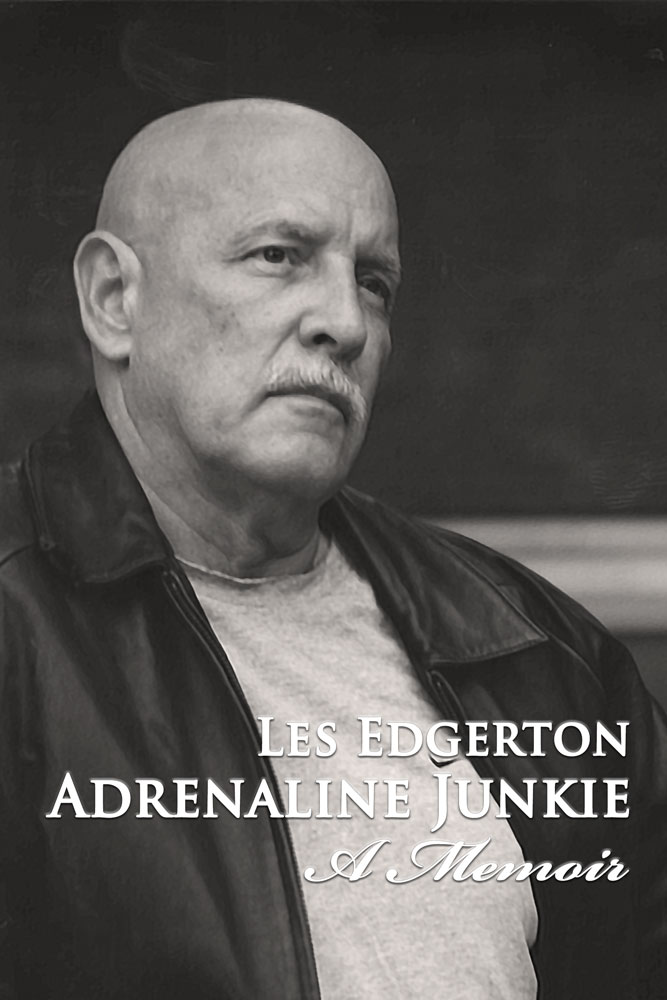


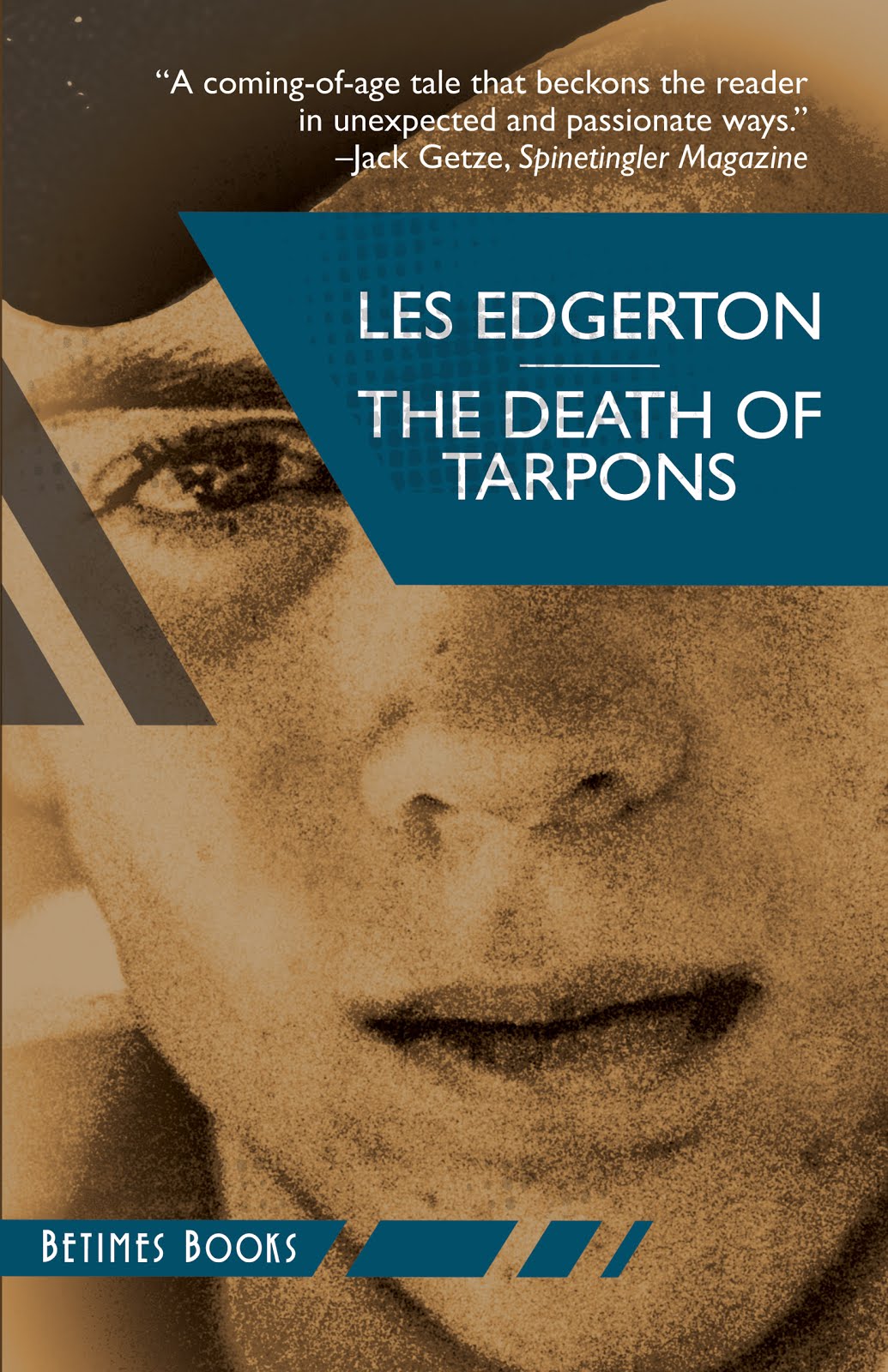

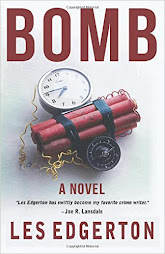


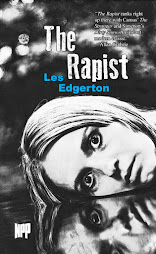
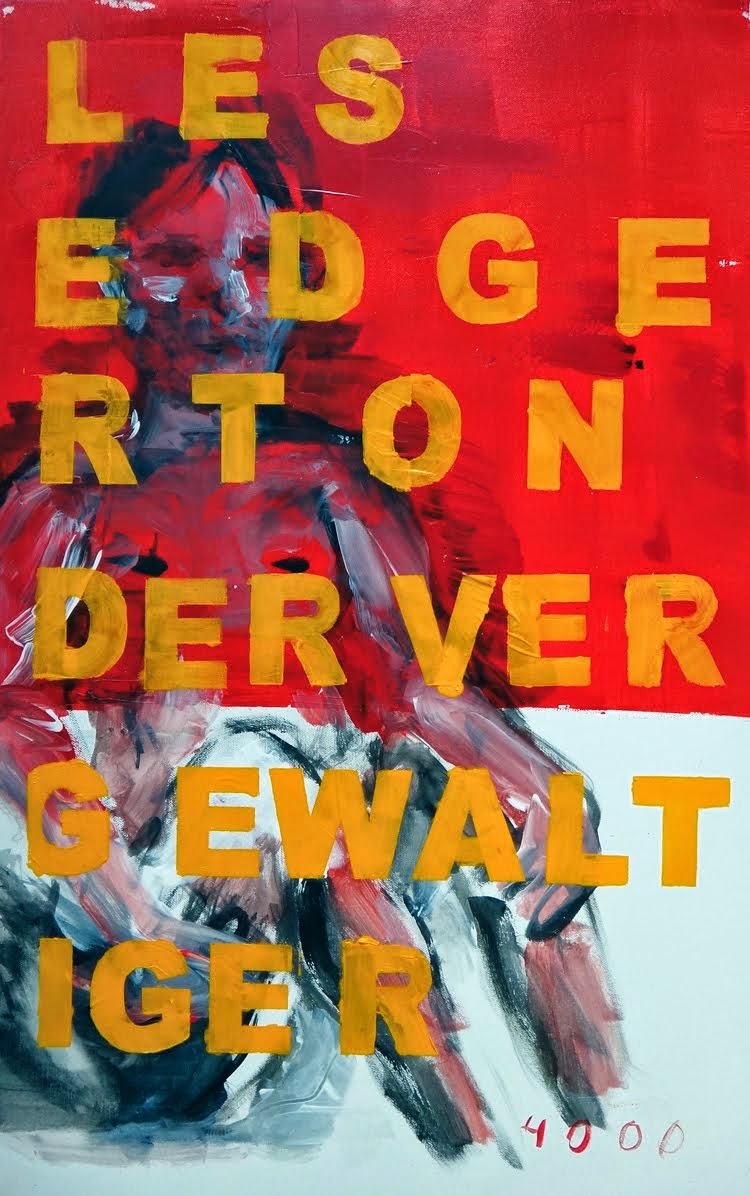
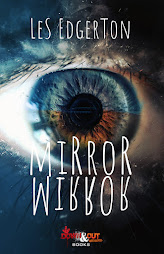

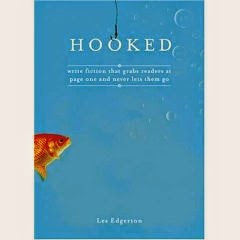

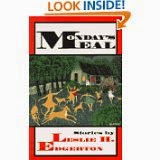
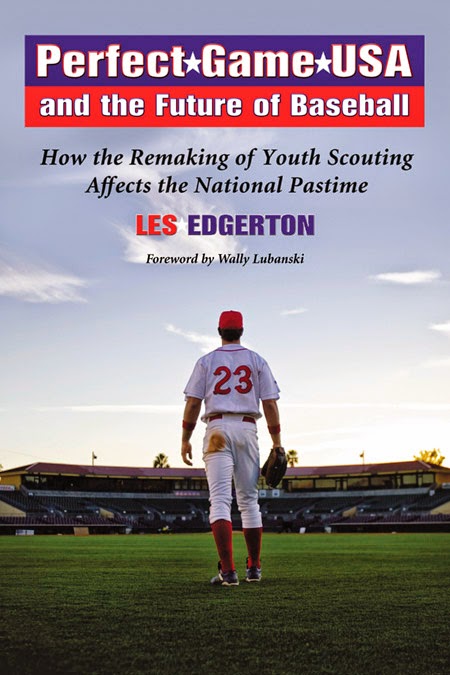
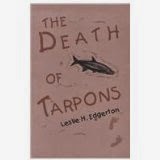







21 comments:
Excellent! Thanks for sharing that.
Thanks, Liz. I'm glad you enjoyed it!
Very good breakdown of the movie. First off, it makes me want to go back and re-watch it. Second off (is there such a thing as second off?), I would buy your book.
Thanks, Helen! That means a lot!
Thanks, Helen! That means a lot!
I saw that movie years ago and I just didn't get it. You've explained it so beauti fully that I'm eager to see it again and view it on a different level. Hopefully, a sign of maturity! Great craft post too.
Thanks, Maria. The casual viewer isn't supposed to notice the art, but the writer should. This movie has more teaching moments in it than any other movie or even novel that I can think of. There's not a single frame that doesn't have a great craft principle involved. I haven't even scratched the surface here for just the actions involved. Haven't even gotten started in how the structure works, the inciting incident, protagonist & antagonist, etc. For instance, the non-writer often thinks Darryl is the antagonist and he's not. The antagonist is Hal, the Arkansas cop. It's just brilliantly-written. No wonder she won the Oscar for it!
Great post Les. Made a hell of a lot of sense while raising some serious insecurities about my own writing.
Thanks, Graham! And, it's good to know I'm not the only one with writer insecurities! Happens to all of us.
First, i have to point out your readability. Not only the novels and short stories but Hooked and this upcoming book. It's more than conversational, it's a pull-up-a-stool-and-have-a-beer lecture. Something you read and don't feel scolded and shamed. It's more of a literary pep talk.
I also applaud your repetition of important points. Consumers have to hear something twice in relatively quick succession to remember it. Something to learn from advertisers. And aren't we all eager to consume everything that will lead to publication.
The Thelma and Louis focus is also perfect. Everyone knows the characters. You read this excerpt (or Hooked) then re-watch and give yourself a mental head slap and say omigod. The best entertainment is extremely complex up close but smooth and simple to digest. Readers want complex characters without complication, you are one of the best at delivering this. If anyone needs another example of show and not tell, read an Edgerton. You're a minimalist and that's one of my favorite qualities in a writer. I hate being at war with what my mind creates and what an author tries to hand feed me.
If this book is anything like Hooked it will be noted, highlighted and dog-eared until i have to buy a kindle edition to read it unobstructed.
I know empathy is an essential quality of any great writer but it's not conducive to fandom. Your hoosiers plug smacked my cheek red. Lexington (Ky) is too close for such an unfortunate geographical oversight; i just plain forgot. Hopefully, IU plays great...and still gets beat. I love a good game almost as much as a good novel.
Elle, your letter really rocked my boat! Thank you so very much. It's so gratifying when you encounter someone who "gets" what you're trying to do. Your comment about repetition was one of the things that really meant a lot to me. I do repeat things and it's for that very reason. I've had a couple of reviews of books like Hooked in which the reviewer complained that I repeated things and they resented that, even though they liked the message. It's just gratifying to know that there are those who get what I'm trying to do. Everything you said meant a lot to me. Thank you.
Sorry about the Wildcats. You guys had a great season and shouldn't feel too bad when the Hoosiers beat you... AGAIN! :)
Elle, your letter really rocked my boat! Thank you so very much. It's so gratifying when you encounter someone who "gets" what you're trying to do. Your comment about repetition was one of the things that really meant a lot to me. I do repeat things and it's for that very reason. I've had a couple of reviews of books like Hooked in which the reviewer complained that I repeated things and they resented that, even though they liked the message. It's just gratifying to know that there are those who get what I'm trying to do. Everything you said meant a lot to me. Thank you.
Sorry about the Wildcats. You guys had a great season and shouldn't feel too bad when the Hoosiers beat you... AGAIN! :)
Loved this chapter. It has me re-examining my WIP to notice my character actions. Maybe your new book should be "What Writers Can Learn from Thelma and Louise"! I'll point my readers your way. I know they'll love it.
~Debbie
Debbie--I love it! If I don't use it for the title, I can for the subtitle! Thanks for a terrific suggestion. (Note to self: Make sure you spell Debbie's name correctly in the Acknowledgements...)
Seriously, I really like that as either a title or subtitle.
This is great. Love the specific examples. We carry your book "Hooked" in our bookstore-The Writers'Workshoppe, and it is a bestseller. Let us know when this one is done and we'll get it on the shelf. Thanks!
Anna, that was music to my ears! (To use a cliche, I, for one, scarcely ever get tired of hearing...) Where is your bookstore? Reason I'm asking, if I'm in the area any time, I'd love to stop in and sign books or just chat and get to know you.
We're also bringing out an ebook version of FINDING YOUR VOICE and may possibly do a print version also. Please send me your store info so I can communicate with you if that happens, okay?
My email address is (all lower case) butchedgerton at comcast dot net.
Thanks for making my day!
Les,
The Writers' Workshoppe bookstore is in Port Townsend, WA. We're a small store in a large writing community with Herbert,Carver,Wiggs,Hannah, Wells,Guterson,and Egan(many more) on our "Local Authors" shelves. Love to have you visit, read,sign books. We also have 2-3 workshops a day,if you want to try out your new material. Website is www.writersworkshoppe.com
I enjoyed your post. I developed an intro. to film course for our local community college years ago and just pulled out my old material with the idea of creating a workshop based on film analysis, so it was very interesting to read your posting. (BTW, the community college was part of the U.K. system, so I'll be thinking of you during the big game this weekend when my Wildcats ruffle Louisville's feathers.)
Thanks, Debbie. Is the tournament still going on? I figured once my Hoosiers were out of it they'd call it on lack of interest... Maybe that's just around here... :)
Although, without the Indiana kid, Teague, how far would they go?
Thanks, Debbie. Is the tournament still going on? I figured once my Hoosiers were out of it they'd call it on lack of interest... Maybe that's just around here... :)
Although, without the Indiana kid, Teague, how far would they go?
Post a Comment